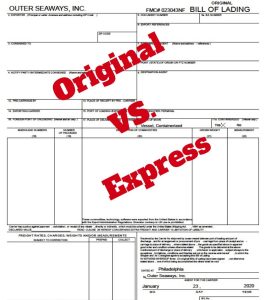The differences between an SWB Bill of Lading (Sea Waybill) and a Telex Release Bill of Lading are significant and involve several key aspects. Below are the main distinctions:
- Nature:
- SWB Bill of Lading: The SWB, or Sea Waybill, is a special form of the ocean bill of lading, also known as the sea freight document or sea cargo receipt. It serves as proof from the carrier to the shipper or their agent that the cargo has been received and is ready for loading. An SWB is non-transferable, meaning that once issued, it cannot be traded or assigned to another party.
- Telex Release Bill of Lading: A Telex Release is essentially a telegraphic release of the cargo. In this case, the overseas carrier retains the full set of original bills of lading and notifies the agent at the destination port. The consignee can then collect the goods at the destination port by presenting a copy of the original bill of lading with the carrier’s official stamp and a letter of indemnity.
- Rights of Ownership:
- SWB Bill of Lading: The SWB does not act as proof of ownership of the cargo and is not negotiable. Once an SWB is issued, the ownership of the cargo no longer lies with the shipper. As a result, this method of release is considered the highest risk for the seller, as they lose control over the goods without a tangible proof of ownership.
- Telex Release Bill of Lading: The Telex Release typically contains the terms “Surrendered” or “Telex Release” and involves the shipper requesting the release by providing a letter of indemnity. After the shipper submits this request, the carrier will issue a Telex Release bill. If the original bills of lading have already been issued, the shipper will typically need to return them while providing a letter of indemnity before the Telex Release is issued.
- Cargo Collection:
- SWB Bill of Lading: An SWB is considered a fast-track document. At the destination port, the consignee only needs to confirm their identity and ensure it matches the consignee listed on the SWB. After clearing the fees, they can collect the goods. No original bill of lading, not even a copy, needs to be presented.
- Telex Release Bill of Lading: In contrast, the consignee must present a copy of the original bill of lading that is stamped by the carrier, along with a letter of indemnity, in order to exchange it for the goods at the destination port.
Important Note: It is not recommended to issue an SWB Bill of Lading if the final payment has not been received. Issuing an SWB is essentially a direct release of the goods, and without a proof of ownership document, the risk to the seller is significantly higher. However, some clients may still request this method, especially in cases such as exports to countries like Denmark or Australia.
In conclusion, while both SWB and Telex Release Bill of Lading offer quicker cargo release processes, they each come with different levels of risk and control over the cargo, making it essential for the seller to carefully evaluate the circumstances before choosing the most appropriate document for their shipment.


